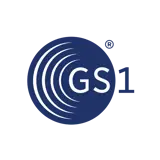Achieve interoperability for your Healthcare IT solutions through our open standards
Columna Flow uses international standards such as HL7 FHIR and an API-first approach and establishes a shared data foundation for making it easier for your hospital's clinical, IT and care staff to work together.
A foundation that helps ensure interoperability between departments, better data quality, increased patient safety, and activating the full potential of your hospital's technologies. Our interfaces are based on open standards allowing for integrations with major hospital systems.
Get the full overview of how Columna Flow integrates with:
- Clinical information systems
- Hospital logistics and supply chain solutions
- Asset and building management systems
- Real-time locating systems (RTLS)
Clinical information systems
Clinicians often find themselves caught up in time-consuming and repetitive EMR responsibilities, such as checking the status of test results, finding local care team members, managing beds, and calling for service personnel. Many of these tasks can be easily done from a mobile device.
With an integration to your Clinical Information Systems, Columna Flow allows clinicians and care teams to:
- See the location of hospital staff on ward level and communicate with physicians, nurses, and porters
- See the location of patient beds, equipment, staff, and request relevant service tasks via an IoT Platform.
- Receive and choose new tasks on their mobile rather than receiving calls from a dispatcher or walking back empty-handed for a new task
- Order and track radiology appointments and transport via Radiology Information Systems (CRIS)
- Reduce sterile instrument turnaround time with T-Doc instrument tracking system for all clinical objects
Hospital logistics and supply chain solutions
Roughly half of bed calls require nursing care follow-ups, while the other non-clinical calls can be carried out by other support staff within the hospital.
The ability to answer, prioritize, and assign nurse call alarms from a mobile device unlocks a new level of efficiency within the hospital and reduces repeated and unnecessary trips to patient rooms.
With Columna Flow’s IOT Platform, clinicians and support staff can:
- Utilize Automated Guided Vehicles that send tasks to your support staff when specific locations are reached with their deliveries
- Integrate alarms and nurse calls with support staff and clinical staff. If a room needs cleaning after a patient stay, the room can be connected directly to the task management system to push a task to the nearest available staff
- Catering System from Matilda FoodTech from Swisslog
REST-based APIs
Columna Flow is using REST-based APIs

Asset & building management systems
Combining building information and asset tracking via REST networks enables care staff and nurses to quickly find clinical equipment locations and reducing wasted time looking for missing equipment.
Administrative staff can manage the medical equipment lifecycle from their asset management systems but also connect the assets to hospital locations. When purchasing new goods via SAP, the user can select the internal organizations (represented with a GLN) and see the relevant local delivery locations for this organization. This allows for orders made in SAP to include a local delivery location with address and location information from the IoT Platform.
In the Western Norway Regional Health Authority, they have structured and standardized their location information across all hospital sites using the Columna IoT Platform as a master database for locations.
With Columna Flow’s integration to asset management systems, clinicians and care personnel can:
- Track and find beds, equipment, and objects across hospital locations in real-time
- Items location tracking supporting integration with your hospital’s Building Information Modeling (BIM) designs directly from Revit
- Combine equipment location with enterprise asset management and logistics - allowing purchasing new supplies and have a local delivery task for service staff
Real-time locating systems (RTLS)
Identify and track the location of equipment in real time. Asset tracking enables you to locate and track objects for hospital and service operations and even automatically trigger messages or tasks for your clinical or support staff based on real-time locations.
Just search the system for the nearest available bed or equipment and avoid wasting time looking for objects that are missing or not returned to their storage space.
Want the complete list of APIs?
Columna Flow is part of our open ecosystem, which supports a large variety og integrations and adaptors.
The open APIs for the Columna product suite - Columna Cura, Columna CIS, and Columna Flow - are based on international standards with interoperability with existing IT solutions in regional, municipal, and private care in mind. This enables efficient integration and shortens the development time, which ultimately increases the commercial potential of innovative projects.
Technology
We develop scalable solutions for the future of healthcare IT. Read more about the technologies we use here.
Latest news
We are happy to share what we do. You can find our latest news here or browse through all of our healthcare news by clicking the button below.

















